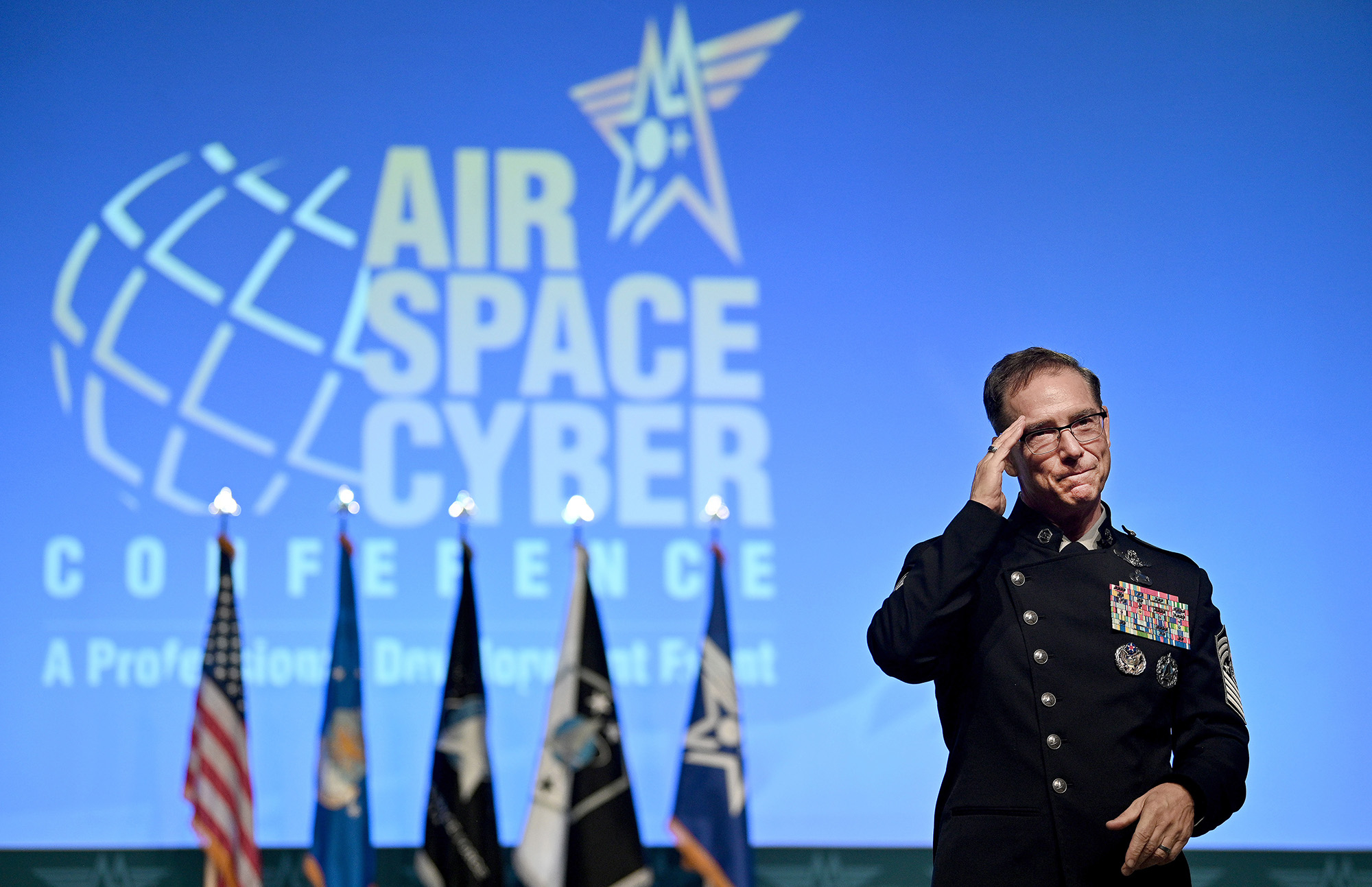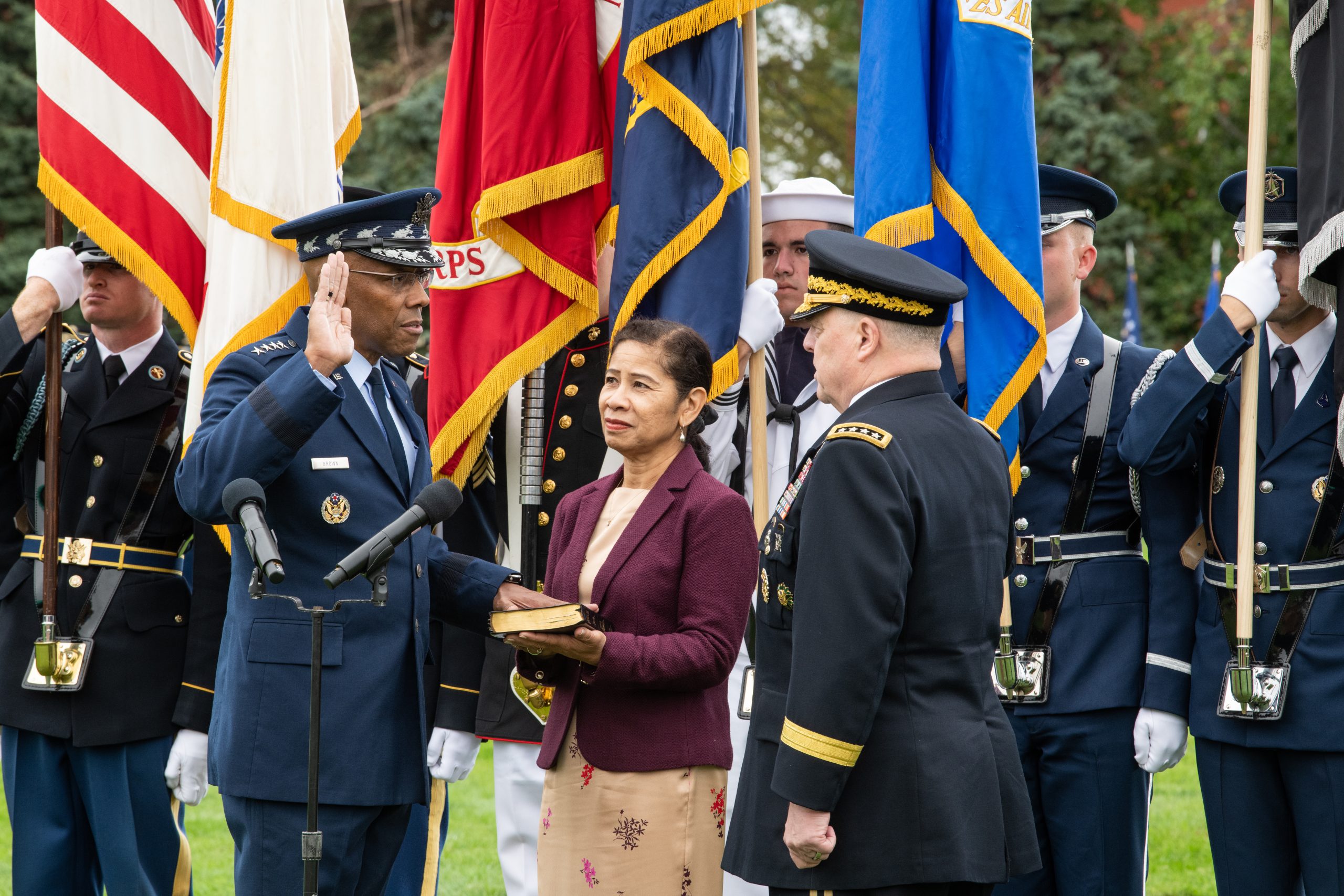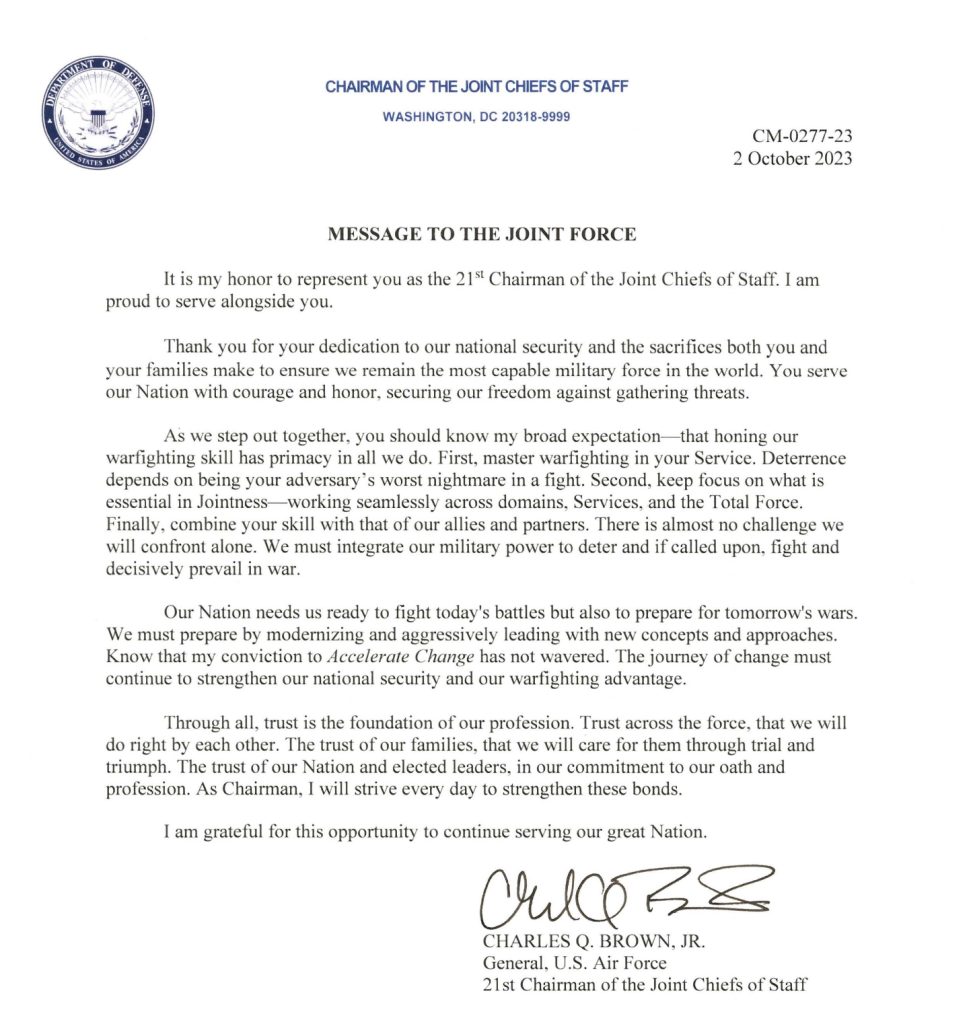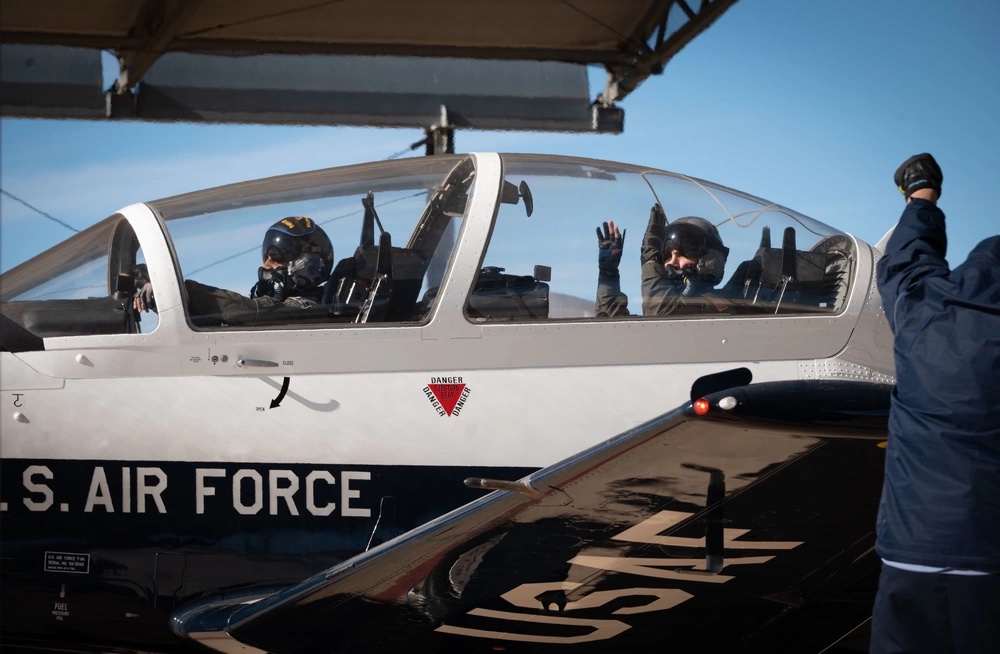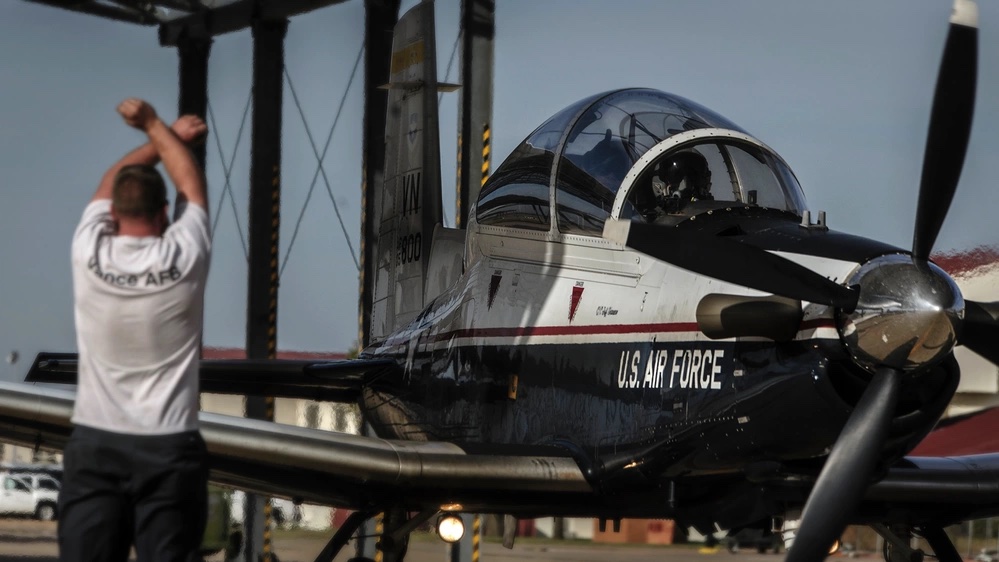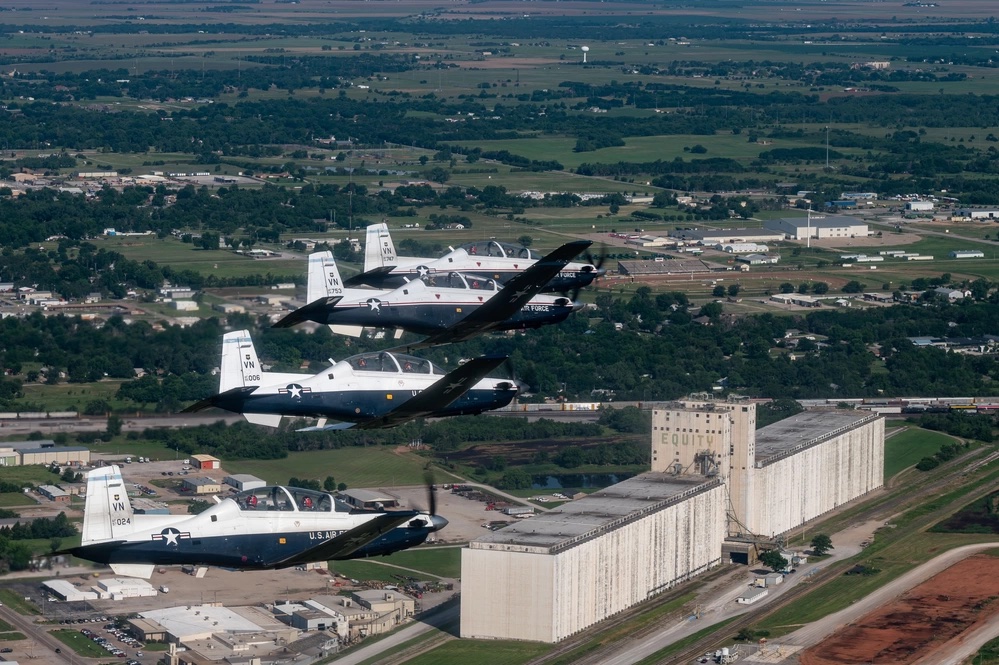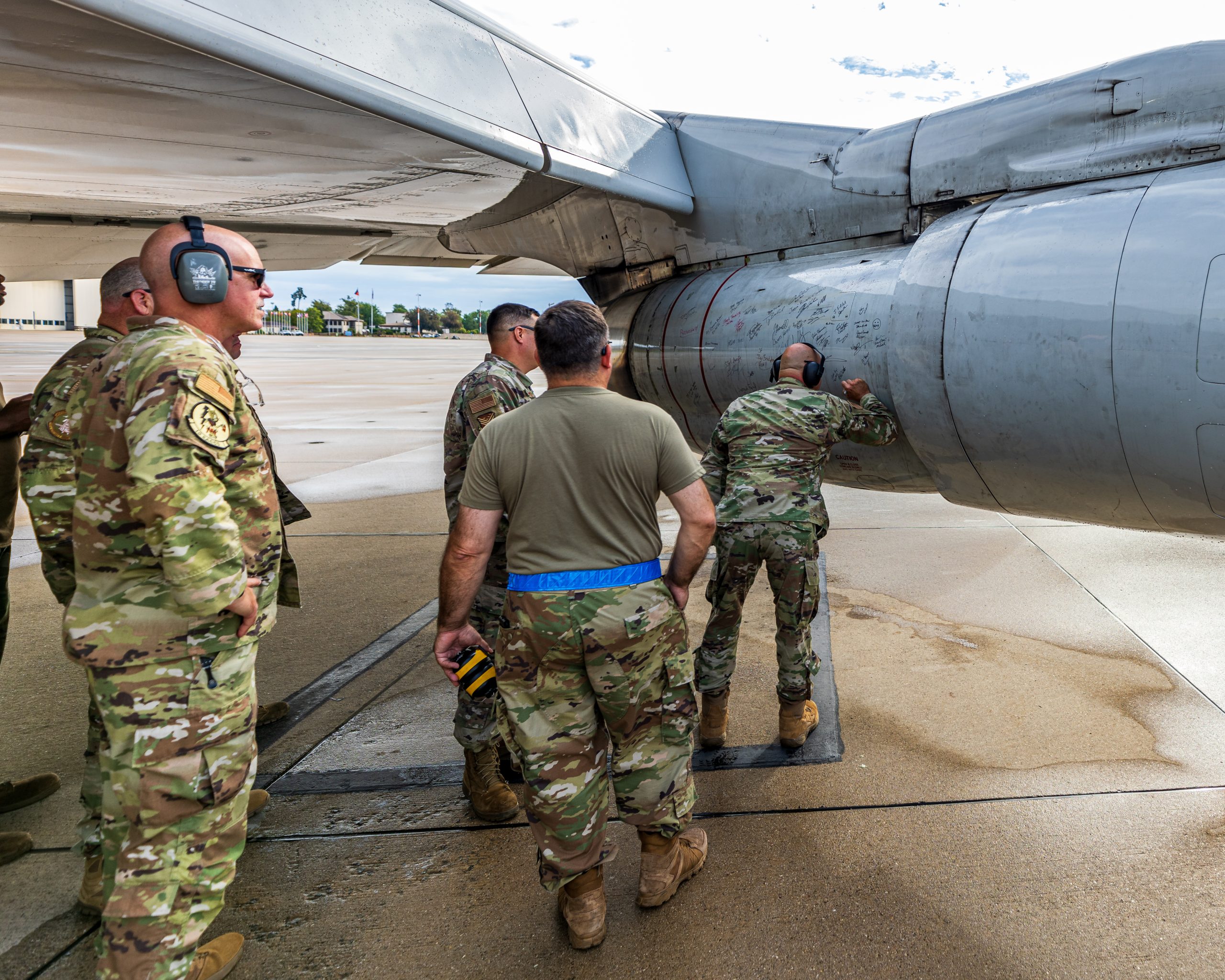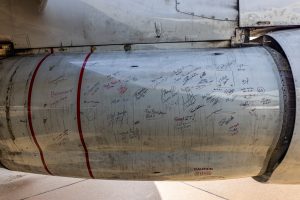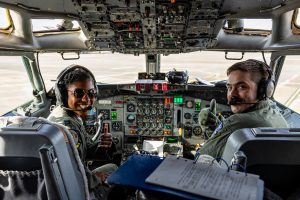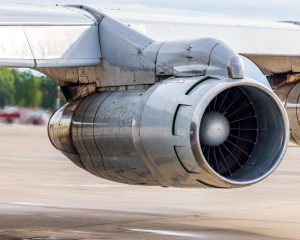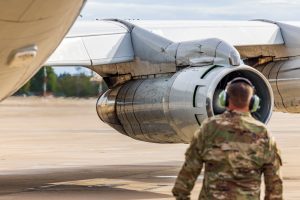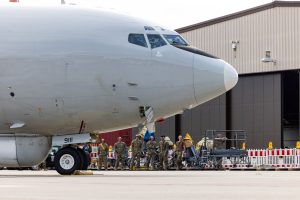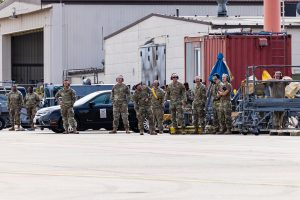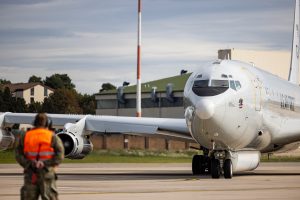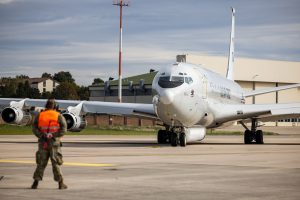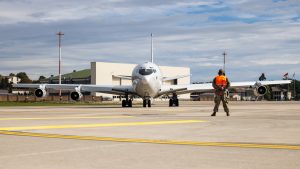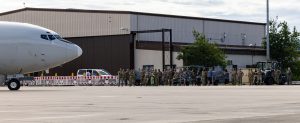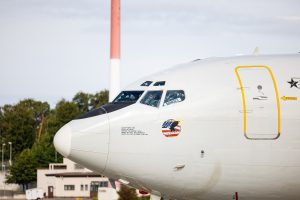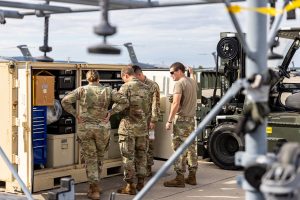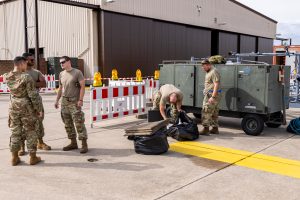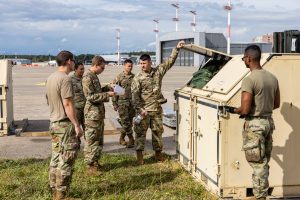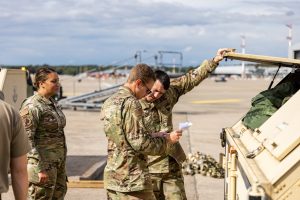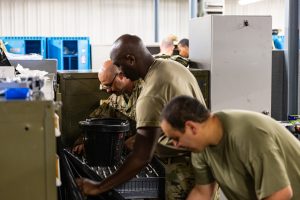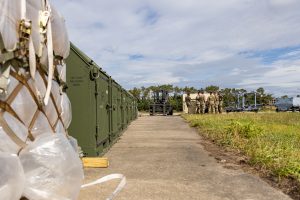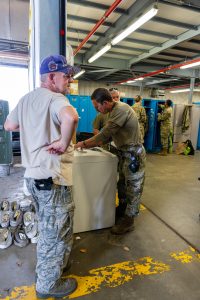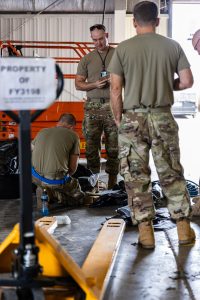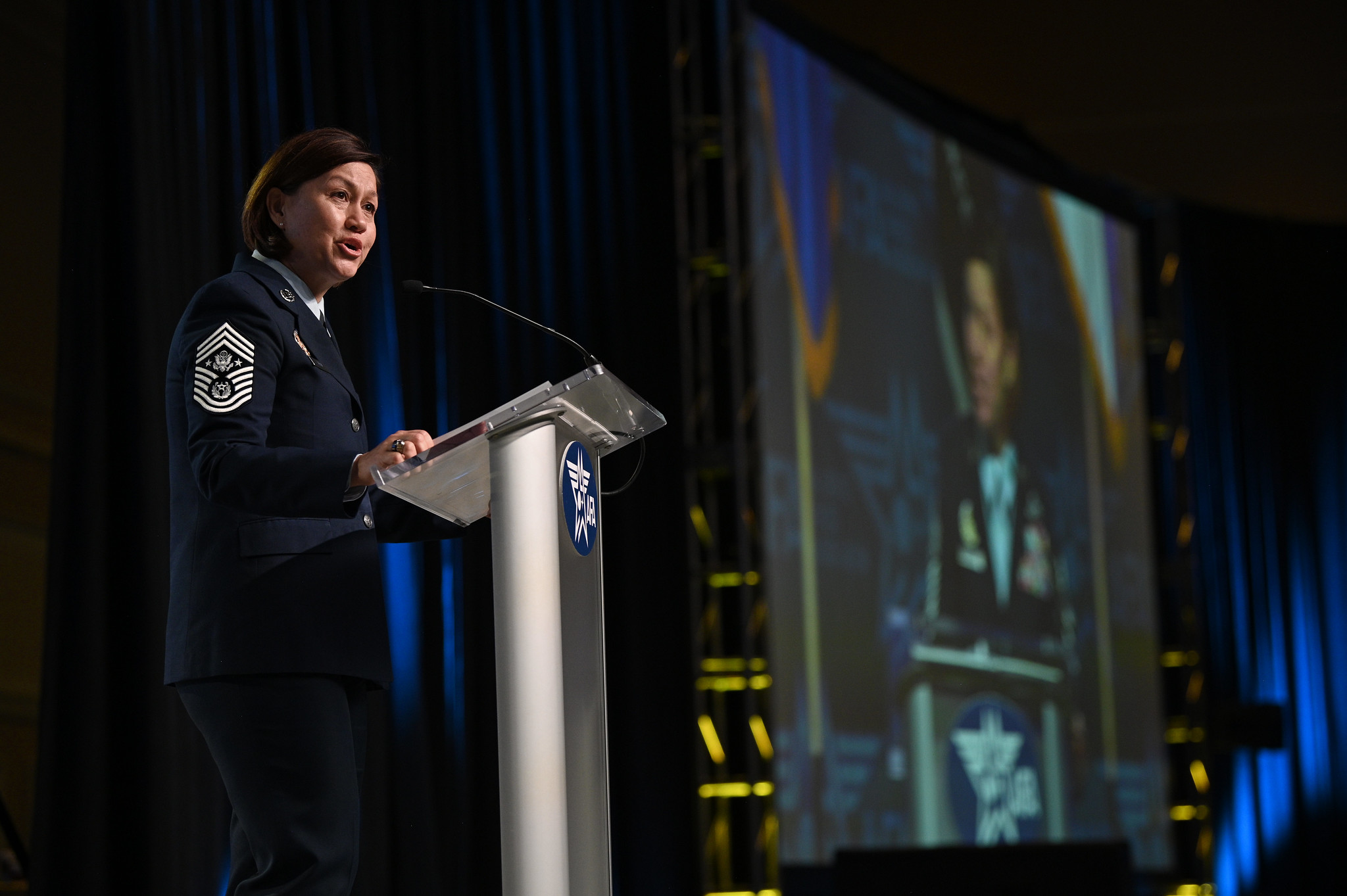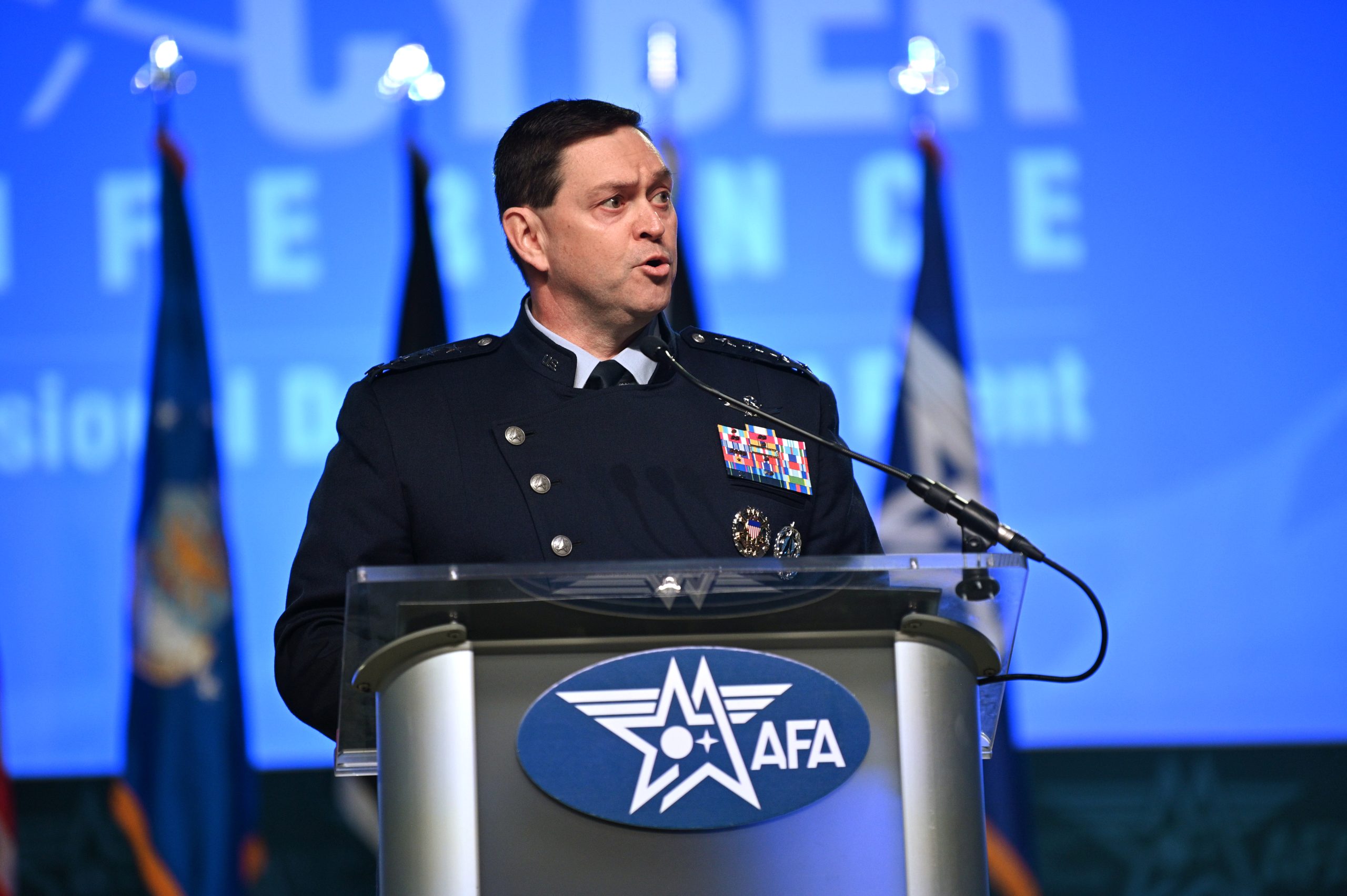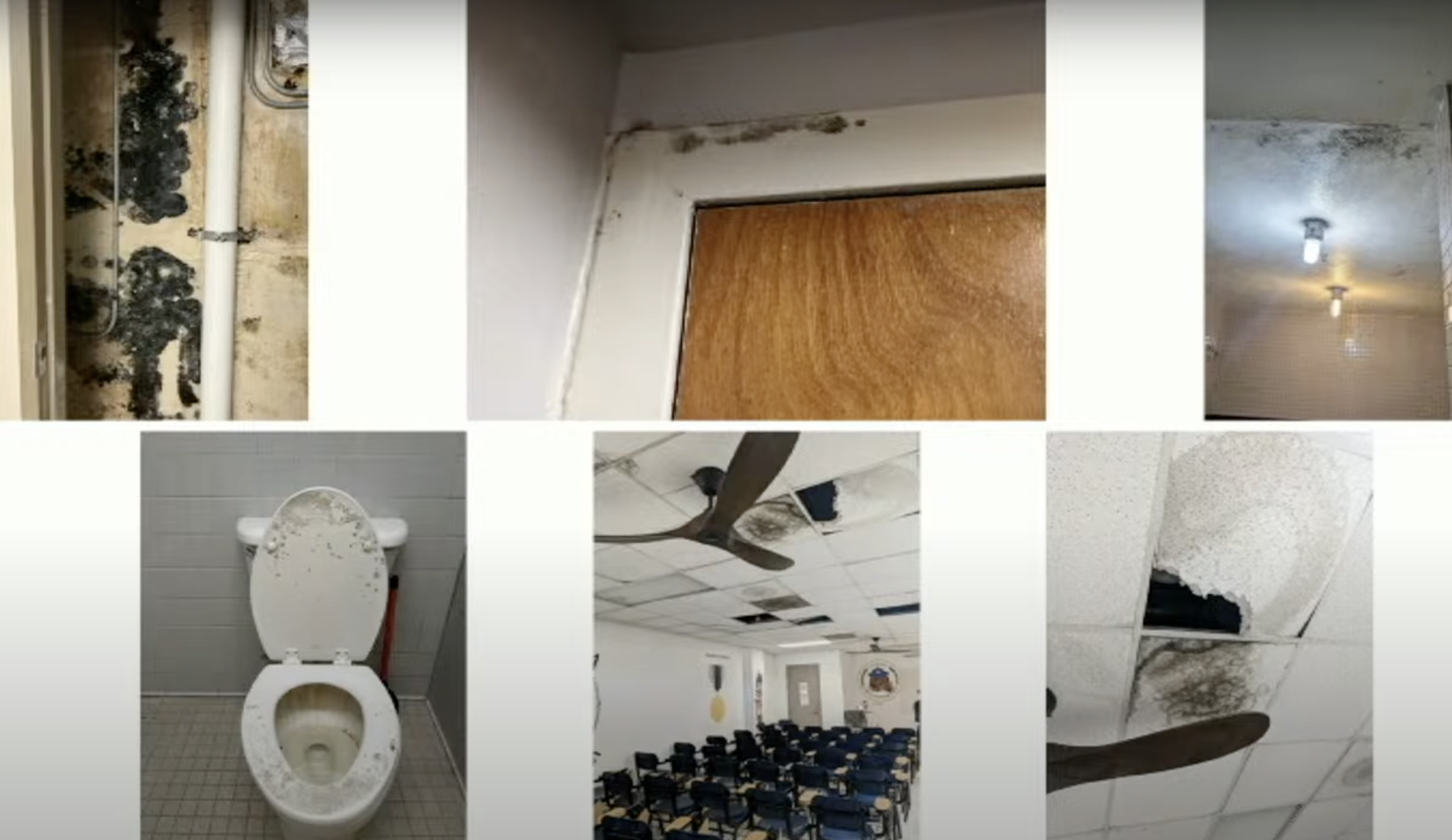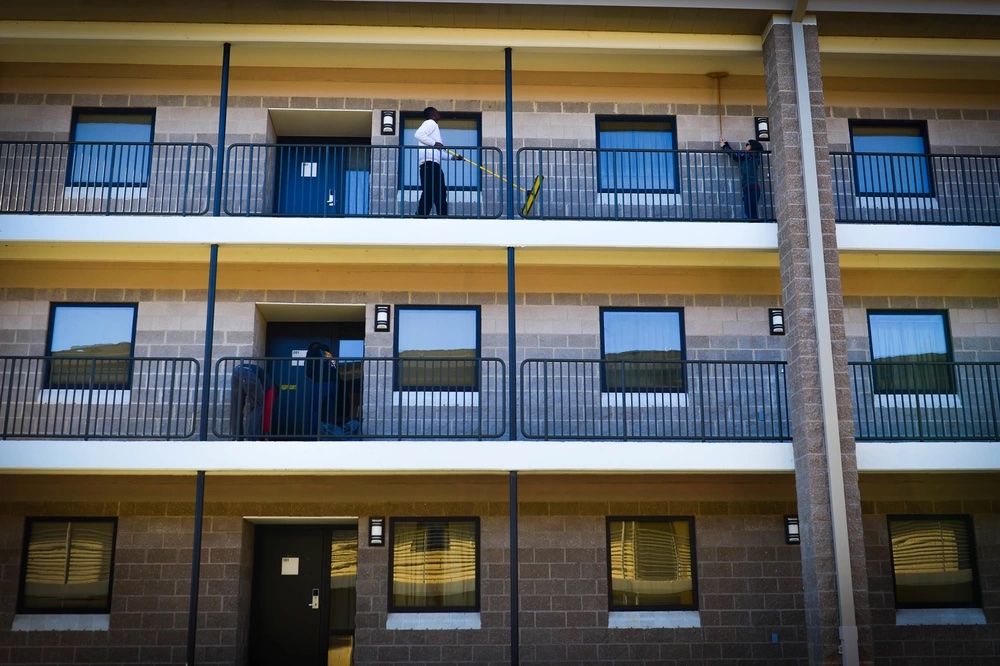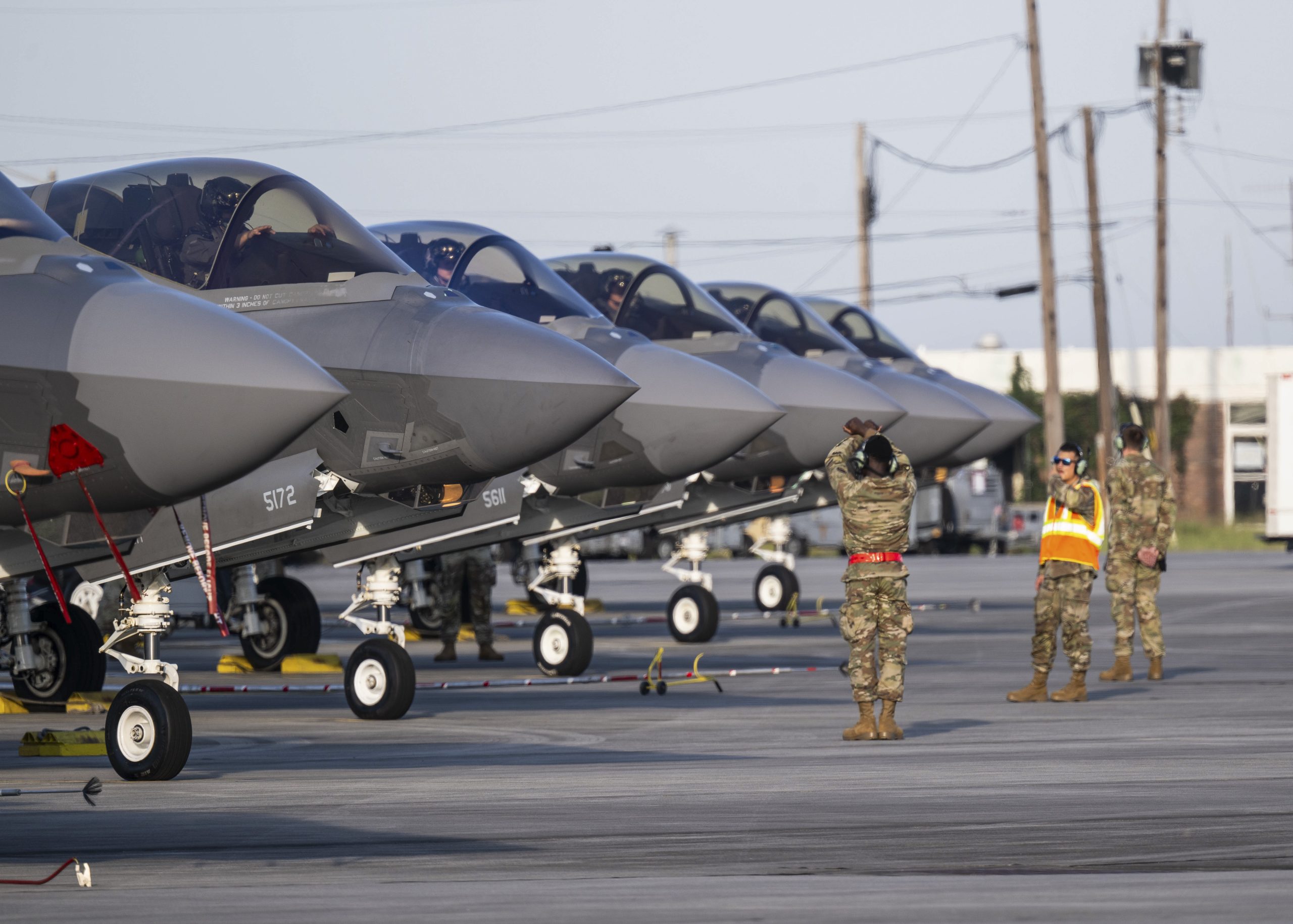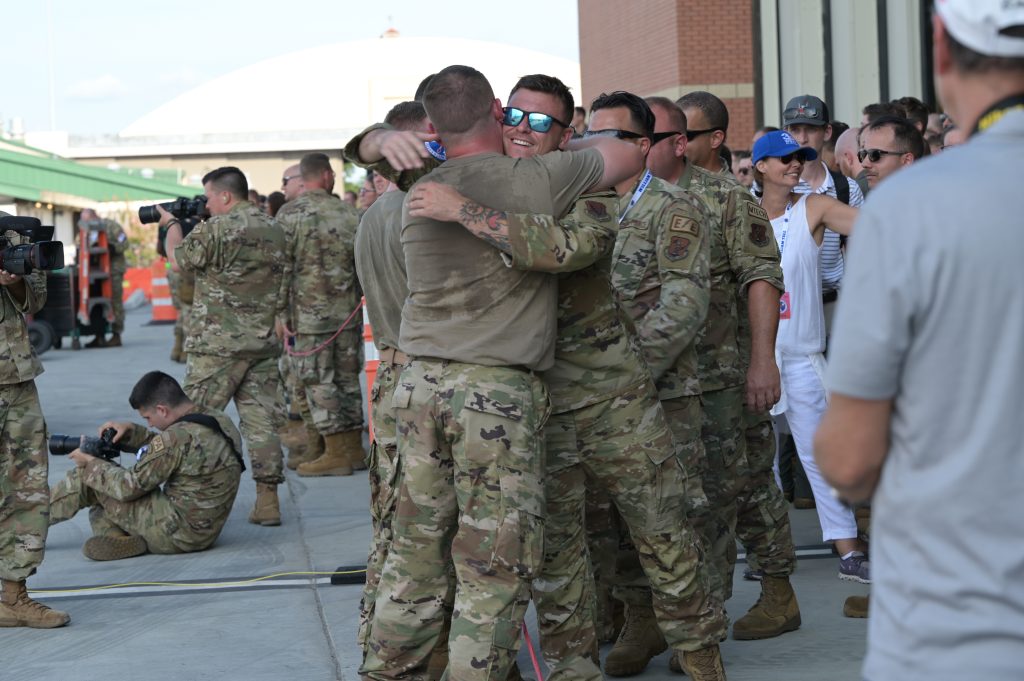In his final keynote address before retiring as Chief Master Sergeant of the Space Force, Roger A. Towberman reflected on the progress of the Space Force and the growth still ahead at AFA’s Air, Space & Cyber Conference on Sept. 12, 2023. Watch the video or read the transcript below.
CMSSF Roger A. Towberman
Thank you so much. Oh my goodness. I haven’t even said anything awesome yet. You guys got to sit down, please. Thank you. Thank you so much. It’s a big week, couple days. If I don’t screw up this keynote, I might make it to retirement. So I’m hoping. My fingers are crossed. Thank you AFA, thank you senior leaders that are here. Thanks for the kind words from each of you. General Brown, I truly appreciate it. It’s been my absolute honor. General Saltzman, every day I come to work and it’s just amazing to be your teammate and I just really appreciate you keeping me around for a couple weeks. And Secretary, just thanks so much. You’ve changed the way we do business and it’s been fantastic not just to see you operate in general, but the way that you’ve been inclusive of Jo and me. It really, truly matters and I appreciate it.
And Jo, I love you. A couple more days and then you’re not going to find me, but I’m going to love you until then. Thanks to the Gaylord for always putting on a fantastic event and thanks to the Guardians and Airmen that, for whatever strange reason, think maybe I’m going to say something meaningful enough that you would sit here and listen to me. I appreciate that we fill up the room. I appreciate that you come to events like this. I appreciate that you invest in yourselves. And finally, thanks to all of those deployed and all of those employed in place, all the work and stiffs that are letting the rest of us screw around this week. So thanks to all of them back home and in places where the action happens.
So everybody’s been showing videos, and I had this idea a few years ago because we’ve been doing something incredible, standing up a new service, and I’ve been asked to do a lot of the human capital stuff and this continues to be the conversations all the time. How are we recruiting? How are we retaining? How are we developing people? And so for the last couple years, I’ve had the public affairs guys sneak cameras out now and again, and we’ve been putting together documentary footage of our journey, and I’m proud to be able to show you a little bit of a teaser of the film we’ve been making. I’m very excited about it. I do have to warn you that if you’re in the video, just be happy that you’re in the video. Don’t take it personally. It’s the real world and real things happen, so I just want to show you this. This is the Space Force’s talent management journey documentary. Let’s see what we got.
Video
Baseball isn’t just numbers. It’s not science. If it was, then anybody could do what we’re doing, but they can’t because they don’t know what we know.
I’m asking you to be OK not spending money that I don’t have. We’re going to work within the constraints that we have and you’re going to get out and do the best job that you can recruiting new players.
You’re just talking, talking la, la, la, like this is business as usual. It’s not.
We’re trying to solve a problem here.
Not like this, you’re not. You’re not even looking at the problem.
We’re very aware of the problem.
OK, good. What’s the problem?
Look, Billy, we all understand what the problem is. You’re discounting what scouts have done for 150 years. Now, there are intangibles that only baseball people understand.
You don’t have a crystal ball. You can’t look at a kid and predict his future any more than I can. I’ve sat at those kitchen tables with you and listened to you tell those parents, “When I know, I know. And when it comes to your son, I know,” and you don’t.
What I see is an imperfect understanding of where runs come from. Using the stats the way we read them, we’ll find value players that nobody else can see. People are overlooked for a variety of biased reasons and perceived flaws. Age, appearance, personality. There is an epidemic failure within the game to understand what is really happening, and this leads people who run Major League Baseball teams to misjudge their players and mismanage their teams. Your goal shouldn’t be to buy players, your goal should be to buy wins.
This is a process. It’s a process. It’s a process. Listen man, I’ve been in this game a long time. I’m not in it for the record, I’ll tell you that. I’m not in it for a ring. Any other team wins the World Series, good for them. But if we win on our budget with this team, we’ll have changed the game and that’s what I want. I think the question we should be asking is do you believe in this thing or not?
CMSSF Roger A. Towberman
Do you believe in this thing or not? So obviously ‘Moneyball,’ which should be required reading for all Guardians by the way, maybe for everyone that works in the Department of Defense, except the chair scene. That’s actual security camera footage in the E-ring of my office. The rest of it we pulled from a movie, a movie about changing the game. And every day that we come to work in my office, we come to work to change the game, to change the world, and that’s how we look at it. That’s how we talk about it. And you’ve heard from everyone else how important this is, and let me say it in yet another way, that we need the stuff and we need the leaders.
If you think that’s the only thing that we need or the most important thing we need, then you’ve got a misunderstanding of where runs come from because the enlisted force of this nation is the greatest military advantage in history. And the object, the goal is not to buy those players, it’s to win. And that means that we see them not as a means to an end, but the end itself. It means that we see our advantage as the advantage it is, and we invest in a value proposition that matters to them. If we lose that focus, if we set out to buy end strength instead of win, then the winning is at risk, and it’s so important that we understand that and get that right.
This has been an amazing journey and it’s been filled with amazing people, so I thought if it was OK with you, we’ll just go over a few things that we’ve done and learned, and mostly a recap of the wonderful people that have helped us in our little Moneyball startup. And so when we started this whole thing, we knew we needed values. It seemed like a good place to start. That’s where everyone should start. And so we got a team together, people like Chief Christina Haley, Chief Shane Pilgrim, who both retired now and moved on to fantastic new lives. Colonel Retired Jason Lamb, Mr. Chang Suh, experts in what we needed to do.
We came up with the ideal, the new CSO gets in and he says, “Let’s amplify the Guardian spirit,” and we said, “Funny you should say that, sir, because we got another book. Let’s call it The Guardian Spirit,” Dr. Matt Job, that helped us so much with that. But maybe more importantly, because you send all messages at all times and we didn’t just sit in back rooms with these experts, and they’re experts, make no mistake, but they didn’t do it on their own. We had Guardians every step of the way telling us what they valued, telling us what they wanted to value, telling us what was important to them, giving us feedback on our process. 18 months, and they turned out OK. Our four Cs matter to me, I know they matter to all our Guardians. What makes them unique is not what they are.
A lot of organizations have values, all the services have values. What makes them unique is that we have an opportunity to weave those values into everything that we do because we started with them. Our annual awards, the Polaris Awards are given for living up to our core values, competing against the standard that is accessible to every Guardian. How close can you get to Guardian perfection and courage or character or connection or commitment? We’re so proud of the work that was done, and folks like Chief Joey Williams and Chief Jess Gray, Chief Jeff Grela, Master Sergeant Fulton on the S1P team that helped make all that happen. It’s hard work. I didn’t know that we couldn’t just recognize people, we had to write policies and we had to coordinate them. And for some reason, lawyers care who I think has courage, I don’t know why. I love them.
And we were able to celebrate our first Polaris Award winners last year with the Schriever chapter out in Los Angeles, the AFA, and truly, truly appreciate them being great hosts and we look forward in February to celebrate it on a more national stage. And we’re very excited about the future, and we hope soon that our Polaris Awards will have the same eminence and the same pizazz and celebration that we have here for 12 OAY. We also were able to weave our core values into our promotions, rewriting the board charge to focus on those core values to say, “Hey, whatever you are doing, you should be doing it through these four Cs. So hey, promotion board, let’s value them through that. Let’s look at those things. Let’s get rid of the tests. Let’s be honest.”
If we’re going to use our senior master sergeants and our chiefs broadly as leaders, then why would we promote them inside their stove pipes? And we tore those down. People like Rob Romer and Chief Suwanee Carvalho, helping us put that together, and it matters. Brand new. Where’s Ana? Did she put on chief yet? Is she here? Still senior, I think Ana Franklin, brand new to the S1P team. So happy to have her. But these are the people that have been working it. We also weaved our core values into the way we develop our folks, and if you visit Space Force basic training, it’s the most beautiful, undiluted Guardian experience that you could possibly have. It’s amazing to see what the team has done down there. Major Emory and Senior Chua, our BMT team, Chief Ming that retired from Delta 1, they’ve just made an experience that feels different. And to those new Guardians, that’s what matters. They want to feel different.
Chief Britton’s here. I don’t know if Senior Brooks is here, but we’ve got our enlisted PME Center of Excellence out at Vosser in Colorado, and they’re doing incredible things, practically perfect Guardian experience. BMT is hard to match. But what they’re doing there, to make that an experience that matters to Guardians in a variety of ways. To meet them here and change their lives, knowing that fundamentally, that’s part of all of our value propositions. All of that falling under the purview of our S1D team, which is incredible, led by Mr. Turner, who’s fantastic and is never anywhere without his chiefs. Chief Bobby Scott, Chief Jason Childers, who now we’ve moved up to work with Ms. Kelly, but soon we’ll have Amber Ambramowski will be there to replace. She’s got a big fan club. But they’re really making a difference.
Remember that we develop Guardians in an ecosystem and any part of that ecosystem that gets tweaked changes everything else, and that you can approach that ecosystem one thing at a time. You can’t talk about BMT only, you can’t talk about recruiting only. You can’t talk about promotions only because you’re always talking about all of it. And so they’ve got this cool Chiclet chart that they’re working like a heat map where if somebody wants to change BMT, the other parts of the ecosystem most closely correlating to that light up red. So you’d be like, “OK, let’s get that expert in. If this is going to change recruiting, let’s get a recruiting expert in before we tweak basic training. If this is going to change PME, let’s get a PME expert in.” So we’re trying to pay attention to this ecosystem.
Also, as you guys have seen, it’s so exciting because the wear test is happening. There’s so many more Space Force. Well, they’re all Space Force uniforms, whether you’re wearing in the Air Force chassis or the new Space Force uniform, but it’s so good to see the new uniforms around. And so we shaped the way that we looked. And one person in particular, Captain Chignola, has done so much. It’s hard to describe how hard this young man has worked in his own time because he wanted to, to help us design the uniforms, to help us design the patches. He was always there, always helping, and his fingerprints are all over how we look and what we’re proud of as emblems of our heritage, our heraldry. Ms. Cathy Lovelady has been there every step of the way as well. I don’t know if Ms. Lovelady’s here, but she’s been awesome.
So the wear testing is ongoing. I am promised, I am certain that we will have PT gear by the spring broadly available, and it’s awesome and everyone will be jealous because it looks really cool, and it’s comfortable and you’ll want to work out in it. And speaking of working out in it, we also with the help of AFRL, Dr. Christensen, my man Shep, Carl Sheppard there, we’ve got our HHA study ongoing. And what we’ve already learned is that it’s a little bit about fitness requirements. It’s a little bit about commitment to mastering myself, but it’s a lot about connection. Guardians can’t wait to go clown each other on social media over what’s happening on their apps. The friendly competition, it’s almost impossible to avoid when you connect people towards a single goal. They immediately team around it. And so we’re already seeing this and by that measure, the study is just incredibly successful already. Ms. Height has been a part of that and I mentioned Dr. Christensen.
Holistic and continuous. That’s how we live. That’s how we should measure how well we’re living, not episodic, asymmetric. It’s always happening, so let’s check on it all the time. It’s going great. Our values also drove our talent management, somewhat like the movie clips sometimes. It can be a little frustrating to want to do things differently, but our talent management boards are proving incredibly successful. I see a path where it’s possible to live in a world without non-vol assignments, to live in a world without programs like EFMP because you don’t need to do that because you’re going to consider every single person’s family situation every single time. So I don’t need a program that somebody has to qualify for. Chief Bass and I learned recently that apparently, if you have a dependent parent, they don’t qualify for EFMP consideration. So here you go, bring your parent into your home to take care of them because they’re sick but whatever they have doesn’t qualify, I guess they’re not a family member in the eyes of policy. I see a path to getting rid of all of those things. I can imagine it.
So we had a lot of people that have helped us with the talent management, and you can see them there somewhere. There they are. There’s Rod Reyes, R2, and Dan Streeter and Sergeant Hircock, Sergeant Lee, and Sergeant Barker, and Sergeant Chapman. Dr. Anderson there, who gave us incredible insight, especially when it came to picking apart Sergeant Bentivegna’s head before the boss hired him. But she really helped us understand how personalities affect how teams are built and what we would look for in good teammates and how once a team is put together, how they’ll mitigate weaknesses and capitalize on strengths. None of the things we’re doing will matter if we don’t communicate well. And I know General Saltzman talked earlier today about Sergeant Terry and the incredible work that they were doing with the Guardian One app.
I won’t rehash all of that, but in addition to that, Dr. Costa, the CTIO, is putting out a newsletter to the force. Ms. Kelly in the S1 is putting out a newsletter, Mr. Turner and S1D is putting out a newsletter. We’re doing everything we can to communicate and we’re doing everything that we can to remind people that the burden of transparency is knowledge. I think sometimes we forget that. We think we want to know things, but once you know things, you got to carry that around. And back to the movie clips, carrying stuff around can be heavy because sometimes it’s not going smoothly and it’s frustrating, but it’s a pretty universal truth all over the world, all throughout history, man was super happy and then they discovered knowledge and then they were miserable. This is just a normal kind of legend.
So we’re going to keep being transparent, but keep understanding that the more you know, then sometimes the more frustrated you might become. The boss puts out the C-notes, I’ve been trying to do podcasts. I know Chief Bentivegna is going to keep doing them. We’re doing everything we can to talk to you, everything we can to communicate and be open. Keep holding us accountable, keep making us keep those promises. Besides formal communication, there’s also informal communication. And because it’s September, which is Suicide Prevention and Awareness Month, there’s a young man, I won’t dox him, as the kids say. Well, there’s a young man on Reddit who’s been one of the key moderators, maybe the first moderator of both the Air Force subreddit and the Space Force subreddit. He’s a Space Force officer, he’s a great guy.
400,000 people visit those subreddits and in 2022, that community made up of Guardians and Airmen intervened 40 different times when suicidal ideations were posted. 40 times, lives have been saved because people in their spare time want to give other people a voice. And so SilentD, I know you’re out there somewhere, I appreciate you. So what’s next? We’ve got a lot of stuff. We talked about the ideal, we talked about the Guardian spirit. We’ve got a draft of a Guardian handbook in work from some folks at Delta 9 who got the ball rolling. I wrote their names down, I don’t know if any of them are here. Sergeant Todd Richardson, Sergeant Alyssa Ruiz, Sergeant Megan Otto, Sergeant Dillon Frick, and all under the leadership of Tech Sergeant Scott McMullen. I don’t know if any of those guys are here or otherwise, Amber, you got to stand up on their behalf.
Audience
McMullen is here.
CMSSF Roger A. Towberman
Where is he? Appreciate you. So the handbook will take the Guardian spirit and continue to amplify it specific to our enlisted force to say, “Hey, this is what these promises, which are beautiful.” I’m telling you that I don’t know that I’ve ever in 33 years seen a more perfect single page document than our Guardian commitment. And if all any of us ever did was make and keep the 12 promises as team leader and make and keep the 12 promises as team member, man, it’d be a pretty awesome team. But we are going to take that handbook and we’ll say, “Hey, this is what those 24 promises mean for specialists. This is what those 24 promises mean for NCOs, et cetera.”
We also had a team from Delta 2 and I don’t know, is Chief Burkhead here? I know she is. Is any of your team here, do you know? They’re not here, but I think we got a picture. So Sergeant Boyenga, Sergeant Countrymen and Sergeant Lamb Sanchez, they came up during our last space enlisted education development panel and they briefed their idea on a fully qualified promotion system, and it was awesome. A promotion system that puts promotions in the hands of the Guardian. A promotion system that ends competition against each other and encourages cooperation with each other, where in a world where I can get to the rank of sergeant on my own by meeting certain competency requirements, or maybe I can get there faster by teaming up with my teammates and we all get there quicker. So we’re excited about that possibility.
We have some work that’s being done on new evaluation forms, which I cannot wait to see roll out. I don’t think, they’re not coming in two days, are they? No. So I’ll still get my last EPR written on a form that chief passed throughout, you guys don’t even have it anymore. That’ll be my last EPR, but we’ll pull it out of the trash and we’ll use it. I’m sure it’ll be awesome AF. AF for Air Force. It’ll be awesome Air Force. But it’s coming. It’s coming. We’re looking at ways to meet your value proposition because you deserve for us to listen to you. You deserve for us to hear you. And all of these things have to happen, but if nothing else, I hope you see how many people have been working so hard to get the stuff that’s already been given, and how much the rank and file are a part of our process and will continue to be.
You know what? I had this, I don’t know where we came up with the idea, but I was in Connecticut a couple weeks ago on leave and somebody thought it might be a cool idea to jump in my Sprinter van with me and ride from Brooklyn back to DC and interview me the whole way. I don’t know what I was thinking, but we had fun and it was a good drive. But the conversations, man, it’s longer than you prep for an interview, right? It was tough. So it got kind of real. But one of the questions that I got asked, and I get asked this from time to time, you. They talk about me, my brand, my personality, my whatever, shtick and, “You’re going to be gone, and then what’s going to happen?”
And I told him and I tell you, and I hope I just showed you that the number of people in the Space Force and in the Department of the Air Force that care about the things I care about and are passionate about, the things I’m passionate about and are willing to do the hard work to make those things happen as me, that number after Friday will be exactly the same number as it is today, minus one. That’s pretty much still everybody. And the really cool news is that we got an anybody that we’re plussing up. That’s going to be awesome. So I would appreciate it if you all would help me give a big round of applause to the Chief Master Sergeant of the Space Force number two, if he doesn’t screw up in two days, John Bentivegna. Hey, man. I’m not giving him a microphone though. I got two more days. D9, we’re so happy. We’re happy you’re here and I can’t wait. Can’t wait to see you Friday, brother. Thanks for everything. Thanks again, brother. Love you.
I promise, I’d do anything for any one of you. The other thing that gets asked a lot, “How do you want to be remembered? What are you proudest of? What’s the accomplishments?” There’s this checklist of questions you have to ask someone when they’re retiring. This is what I’d ask. If I’m to be remembered at all, I hope it’s through 1,000 different stories of 1,000 real relationships that I had with 1,000 real people, all of you and all the people that raised me and all our professional progeny for 1,000 generations. If any of us are worth remembering, we’re worth remembering in specific, real stories about how we specifically really changed each other’s lives. So thank all of you that helped change mine, and thanks for being part of my story. God bless the Air Force, God bless the Space Force. Semper Supra. I appreciate you.
